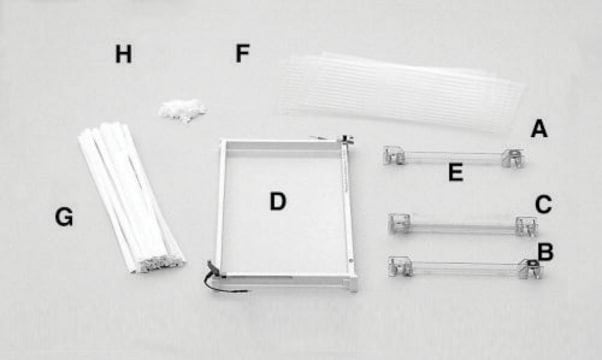General description
Paired box protein Pax-8 (UniProt: Q06710; also known as PAX-8) is encoded by the Pax8 gene (Gene ID: 7849) in human. PAX-8 is a member of the paired box (PAX) family of transcription factors. PAX proteins are important regulators of organogenesis and act as key factors in maintaining pluripotency of stem cells during development. PAX-8 acts as a transcription factor for the thyroid-specific expression of the genes and is exclusively expressed in the thyroid cell type, maintaining the functional differentiation of such cells. PAX-8 is shown to be crucial in determining cell fate during the development of the thyroid, kidney, brain, eyes, and Müllerian system. It also regulates the expression of the Wilms′ tumor suppressor gene (WT1). PAX-8 is a shown to be a highly sensitive marker for thyroid, renal, Müllerian, and thymic tumors. However, lung adenocarcinomas, breast and adrenal neoplasms, and the majority of gastrointestinal tumors are reported to be negative for PAX-8. Mutations in Pax8 gene are known to cause congenital hypothyroidism that is characterized by thyroid dysgenesis and in some cases the thyroid gland can be completely absent, ectopically located and/or severely hypoplastic. Five isoforms of PAX-8 have been described that are produced by alternative splicing. (Ref.: Laury, AR et al. (2011). Am J Surg. Pathol. 35(6); 816-826; Xiang, L and Kong, B (2013). Oncol. Lett. 5(3); 735-738).
Specificity
Clone 15C8.1 detects Pax-8 protein in human ovarian cells. It targets an epitope within 129 amino acids from the internal region.
Immunogen
GST/His-tagged recombinant fragment corresponding to 129 amino acids from the internal region of human Pax-8.
Application
Anti-PAX-8, clone 15C8.1, Cat. No. MABS1899, is a mouse monoclonal antibody for detection of human Paired box protein Pax-8 and has been tested for use in Immunohistochemistry (Paraffin) and Western Blotting.
Immunohistochemistry Analysis: A 1:50 dilution from a representative lot detected Pax-8 in human uterine tube tissue sections.
Research Category
Signaling
Quality
Evaluated by Western Blotting in OVCAR3 cell lysate.
Western Blotting Analysis: 0.5 µg/mL of this antibody detected PAX-8 in 10 µg of OVCAR3 cell lysate.
Target description
~50 kDa observed; 48.22 kDa calculated. Uncharacterized bands may be observed in some lysate(s).
Physical form
Format: Purified
Protein G purified
Purified mouse monoclonal antibody IgG1 in buffer containing 0.1 M Tris-Glycine (pH 7.4), 150 mM NaCl with 0.05% sodium azide.
Storage and Stability
Stable for 1 year at 2-8°C from date of receipt.
Other Notes
Concentration: Please refer to lot specific datasheet.
Disclaimer
Unless otherwise stated in our catalog or other company documentation accompanying the product(s), our products are intended for research use only and are not to be used for any other purpose, which includes but is not limited to, unauthorized commercial uses, in vitro diagnostic uses, ex vivo or in vivo therapeutic uses or any type of consumption or application to humans or animals.








